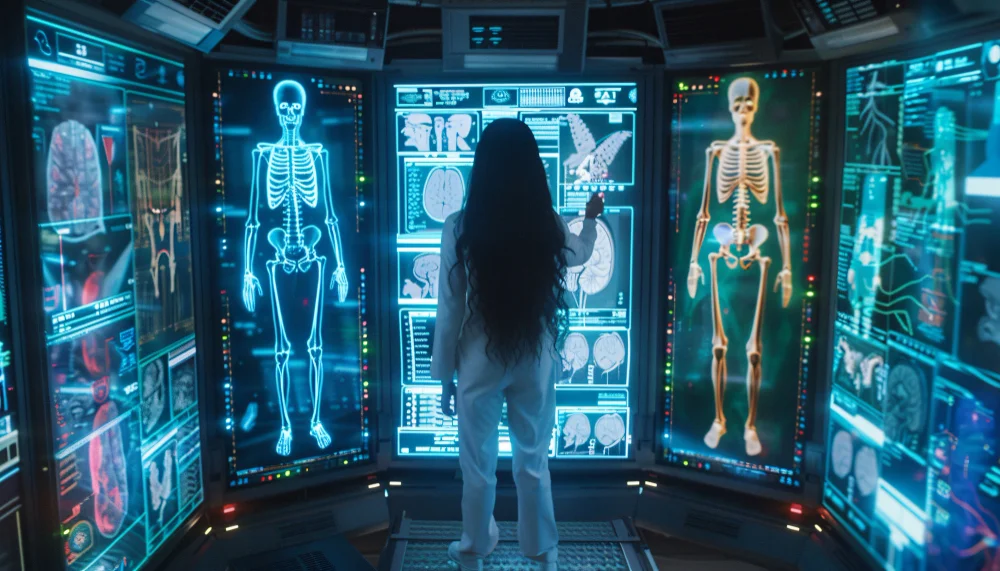Introduction
In the fast-paced world of healthcare, the demand for accurate, timely, and efficient diagnostic imaging has never been greater. As medical conditions become more complex and patient volumes rise, healthcare providers are turning to advanced technologies to improve diagnosis and treatment outcomes. Diag Image is emerging as a key player in this transformation, redefining how medical imaging is conducted, interpreted, and utilized.
By integrating artificial intelligence (AI), machine learning (ML), and cloud-based data systems, Diag Image represents the next generation of medical imaging innovation. It not only enhances the accuracy of diagnosis but also gives healthcare professionals deeper insights into patient conditions—leading to faster decisions, personalized treatments, and better care outcomes.
The Evolution of Medical Imaging
Medical imaging has evolved from simple X-rays to highly advanced modalities such as MRI, CT, PET, and 3D imaging. These innovations have given clinicians unprecedented visibility into the human body. However, the challenge remains in processing and interpreting massive volumes of imaging data accurately and efficiently.
Traditional imaging methods often depend on manual interpretation by radiologists—a process that can be time-consuming and prone to human variability. Diag Image addresses this issue by bringing automation, intelligence, and real-time analysis into the diagnostic process, ushering in a new era of precision and efficiency in medical imaging.
See also Why Opt for a Facelift in Dubai?
What Makes Diag Image the Future of Diagnostic Insight
1. Artificial Intelligence for Smarter Diagnosis
At the heart of Diag Image lies its AI-driven diagnostic system. This technology uses deep learning models trained on thousands of medical images to identify patterns, detect abnormalities, and even predict potential health risks.
Diag Image assists clinicians by highlighting areas of concern within images, ensuring that even the smallest details are not overlooked. Whether it’s detecting micro-lesions in a lung scan or identifying early-stage neurological disorders, AI helps radiologists make faster, more accurate, and more consistent decisions.
2. Real-Time Image Analysis and Reporting
Speed is critical in modern medicine, especially in emergency cases where every minute counts. Diag Image provides real-time analysis of medical scans, generating reports in seconds rather than hours.
This rapid turnaround enables doctors to begin treatment immediately, improving survival rates and patient satisfaction. The system also allows healthcare teams to collaborate on diagnostic results instantly, even across different locations.
3. Cloud Connectivity and Remote Collaboration
Diag Image utilizes cloud-based technology to allow healthcare providers to share, access, and review imaging data securely from anywhere. This capability breaks geographical barriers and promotes global collaboration between specialists.
For example, a radiologist in one country can instantly review a scan taken in another, providing expert consultation without delay. This connectivity ensures that every patient—no matter their location—can receive accurate, high-quality diagnostic care.
How Diag Image Enhances Diagnostic Accuracy
1. Consistent and Standardized Imaging Interpretation
Human interpretation can vary from one clinician to another, but Diag Image ensures consistency through standardized AI algorithms. These algorithms analyze every image using the same criteria, eliminating variability and reducing the risk of misdiagnosis.
2. Early Detection and Predictive Insights
Diag Image goes beyond detection—it predicts. Using predictive analytics, it can identify early warning signs of diseases before symptoms appear. This proactive approach helps physicians prevent complications, manage chronic conditions better, and personalize treatments for individual patients.
3. Integration with Electronic Health Records (EHRs)
Diag Image integrates seamlessly with existing hospital information systems and EHRs. This allows doctors to view complete patient histories alongside imaging data, offering a comprehensive understanding of the patient’s condition. This holistic view enhances clinical decision-making and ensures continuity of care.
Empowering Healthcare Professionals
AI as a Partner, Not a Replacement
Diag Image does not replace the expertise of radiologists—it empowers them. By handling repetitive and data-heavy tasks, the platform allows clinicians to focus on complex cases that require human judgment and experience.
AI acts as a “second set of eyes,” ensuring that no anomaly is missed, while also reducing workload and burnout among healthcare professionals.
Training and Skill Enhancement
The platform is also a valuable educational tool. It helps new radiologists and medical students learn by providing AI-annotated imaging examples and diagnostic suggestions. Over time, this fosters a generation of healthcare professionals who are tech-savvy, efficient, and confident in AI-assisted environments.
Improving Patient Experience Through Technology
At its core, Diag Image is designed to improve the patient experience. Quicker diagnoses mean reduced anxiety, faster treatment initiation, and better overall outcomes.
Patients benefit from transparent, digital reports that can be easily accessed and shared with specialists. The accuracy of AI-assisted imaging also means fewer repeat scans, saving both time and healthcare costs.
Personalized Healthcare for Every Patient
Diag Image contributes to the growing field of personalized medicine. By analyzing detailed imaging data, it helps doctors tailor treatments based on individual anatomy, disease progression, and genetic factors. This personalized approach leads to higher success rates and better quality of life for patients.
Data Security and Compliance
With medical data being highly sensitive, Diag Image employs state-of-the-art encryption and security protocols to safeguard patient information. The platform complies with international healthcare privacy standards, ensuring that data remains protected at every stage—from image capture to cloud storage.
This strong focus on security builds trust among patients, doctors, and healthcare organizations, reinforcing Diag Image’s reputation as a reliable and responsible healthcare technology solution.
Advancing Research and Medical Innovation
Beyond its clinical applications, Diag Image also plays a crucial role in medical research and innovation. Its vast collection of anonymized imaging data allows researchers to explore disease patterns, test new AI models, and develop improved diagnostic techniques.
This contributes to the advancement of healthcare as a whole, helping scientists and clinicians uncover new insights into how diseases develop and progress.
The Road Ahead: What the Future Holds
As technology continues to advance, the potential for Diag Image to transform healthcare is limitless. Future developments are expected to include:
- 3D and 4D imaging visualization for more dynamic diagnostics
- AI-driven surgical planning tools that use imaging data to guide procedures
- Predictive disease modeling, allowing early intervention before symptoms appear
- Wearable imaging integrations for continuous monitoring of patient health
These innovations will further bridge the gap between technology and human expertise, shaping a healthcare system that is more responsive, connected, and intelligent.
Conclusion
The future of medical imaging is no longer a distant concept—it’s already here with Diag Image. By combining artificial intelligence, real-time data analysis, and cloud collaboration, Diag Image redefines how healthcare professionals diagnose and treat patients.
Its ability to deliver faster, more accurate, and more predictive insights ensures that both clinicians and patients benefit from cutting-edge technology. As the healthcare industry continues to evolve, Diag Image stands as a beacon of innovation—transforming diagnostic imaging into a smarter, more precise, and patient-centered process.
In an era where every image counts, Diag Image is not just advancing medical technology—it’s shaping the future of diagnostic insight.


